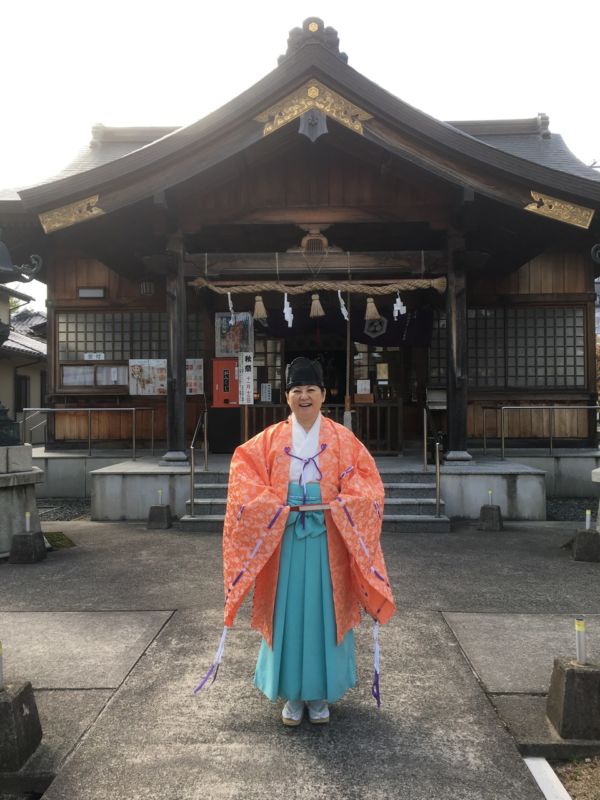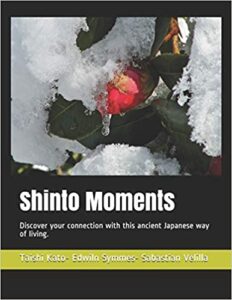
Taishi Kato, priest of Hattori Tenjingu in Toyonaka City, Osaka, has featured on Green Shinto before. His mission is to spread awareness of Shinto as a universal religion based on living in harmony with nature. (To learn more about Kato sensei, including an interview, please see here or here.)
Now together with two other collaborators, the young priest has produced a paperback of illustrated Shinto Moments. Below is an extract from the introduction, explaining the purpose and origin of the book. There then follow illustrated examples of the content (the book is available here on amazon).
*******************
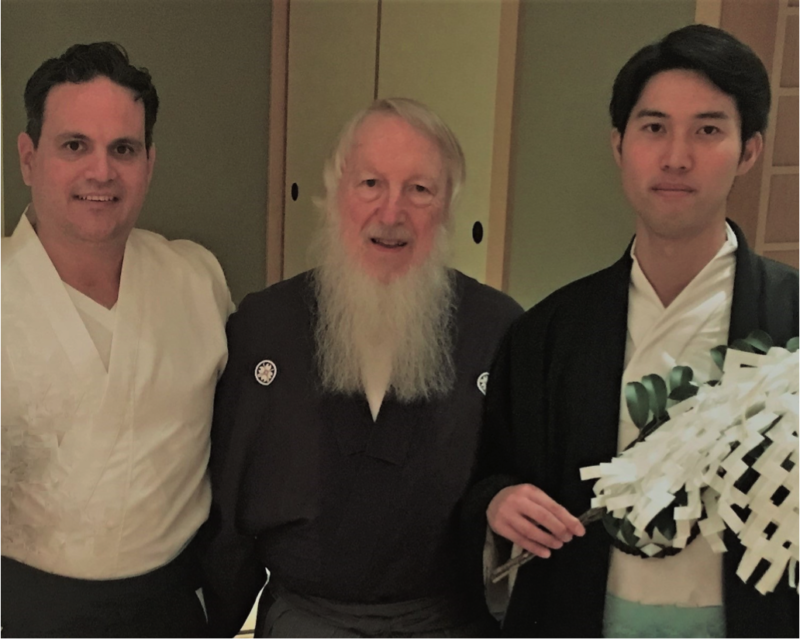
Taishi Kato writes: After qualifying for the Shinto priest, I found discoveries and fascination in looking at Shinto from a foreign perspective So I decided to study at the School of Oriental and African Studies at the University of London.
For my master’s degree at the university, I majored in Japanese religious studies to study Shinto.
I studied Shinto and other religions with about 20 students from the United States, England, Italy, China, and South Korea, who were multinational. I learned about the Japanese religions that are part of the Shinto.
After my last class in graduate school, a friend told me, “I didn’t understand Shinto after all.” I was told, The number of classes was limited, no books were explaining the basics of Shinto, and Shinto is linguistic. It was difficult for foreigners to understand the religion due to its nature of valuing sensitivity over explanation.
Although about 20 students were interested in Japanese religion and had the opportunity to come into contact with Shinto, I failed to take advantage of the opportunities.
Rather than conveying a formal conceptualization of Shinto to help people understand it in their minds, we need to find a way to convey a Shinto sensibility.
I want to tell the world in English about Shinto as it is felt in our daily lives, not in an academic book! With this in mind, I returned to Japan.
Meeting a Kyudo Artist in Florida
A few months after I returned to Japan, I received a call from a martial arts expert living in Florida.
He said, “I’m very interested in Shinto, which is a spiritual pillar of Japanese culture, and I’d love for you to come to Florida and give a talk. I would love for you to come to Florida and give a talk.”
He was an American with a passion for Japanese culture who designed and built the Kashimon Dojo, a dojo where you can practice Kyudo, Karate and Iaido.
I was studying in England and wanted to learn more about how Americans felt about Shinto, so I went to Florida.
He wanted me to take this opportunity to share my thoughts on Shinto with many Americans, so he organized a lecture in English at the Morikami Museum in Florida.
At the lecture, I met his friend, a 79-year-old American who is a Kyudo practitioner. This meeting led to the publication of this book.
******************
Sample excerpts of Shinto Moments:
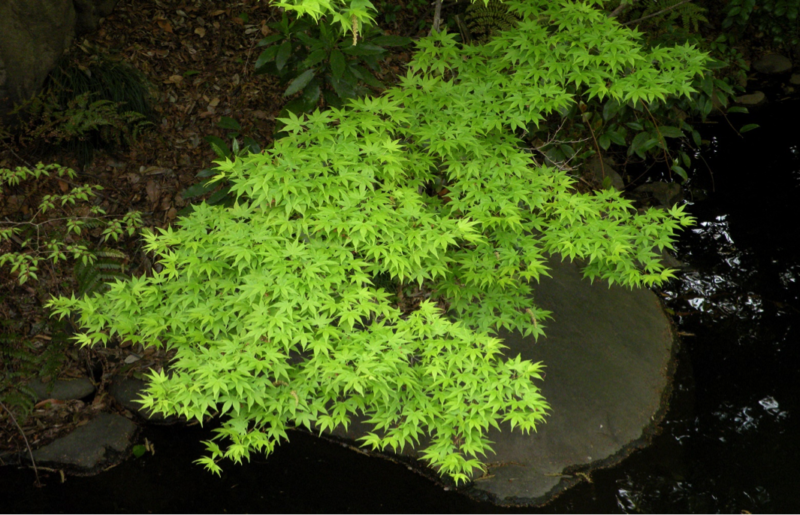
Over 10,000,000 people visit Meiji Jingu Shinto Shrine in the heart of Tokyo each year. At new year’s and many other occasions during the year, the Shinto priests offer blessings.
Many of the visitors pass over the bridge that offers this magnificent view in early spring. To notice this striking beauty, the photographer had to pause for a while and then look down from the bridge. The harmony of the earth, the new green maple leaves, the massive stone and the water evoke many stories. Was the maple tree planted there or did a seed just happen to catch hold in this sacred fertile earth? The water reminds us that even the sliver of a new moon seen in your cup of tea will also be shining in your loved one’s eyes as well as the Taj Mahal reflecting pond. These are Shinto Moments.
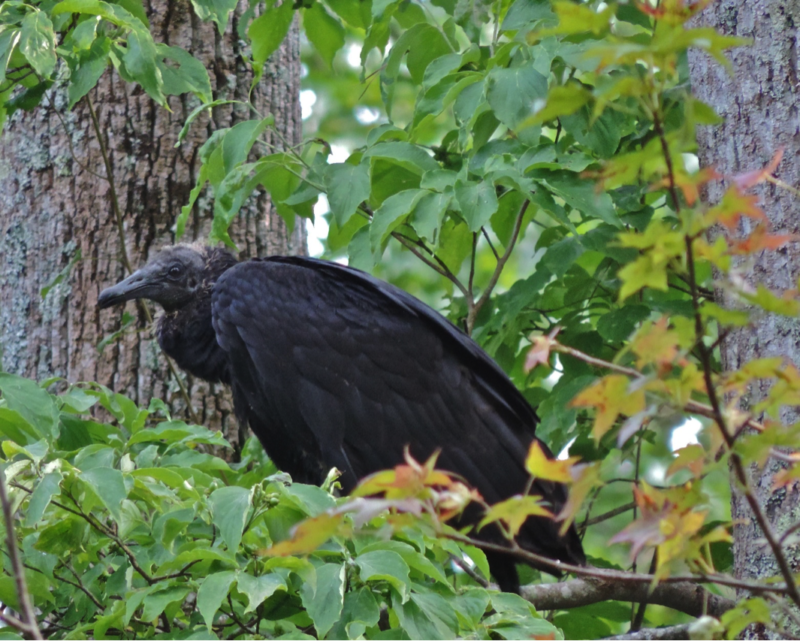
Perhaps you have seen a buzzard, insects, or a shark and quickly looked away. Did you then have the realization that they are just filling their “niche” in the world’s life force? Some may think of them as negative or gross, but your realization that they are a necessary part of the life force is a wonderful Shinto Moment.
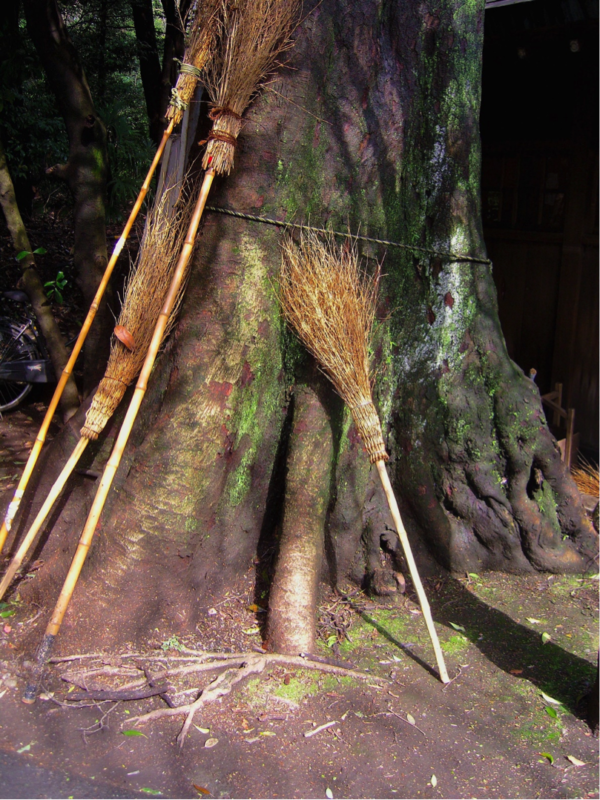
When one lives in harmony with the land, then there is no need to go to the hardware store and buy a rake or a broom. Shinjuku Park in downtown Tokyo supplies all the materials needed for the groundskeepers to make their own implements, each one tailored to the variety of raking situations that they encounter.
When asked about that, they said that they preferred to make the brooms to fit the needs of the facility. Whenever one reuse and recycles nature’s resources, these are Shinto Moments.
********
To ask questions or add your own Shinto Moment, see the following website run by Rev. Taishi Kato: www.shintomoments.com.


